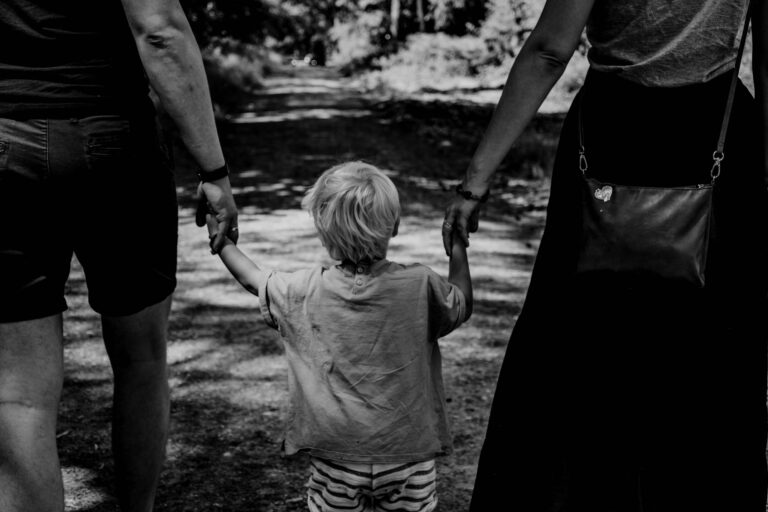Bracing for the arrival of a newborn, many parents envision a serene feeding journey—one where breastfeeding flows seamlessly, day and night, an unspoken bond weaving mother and child together. Yet, the reality can dart in an entirely different direction. Unexpected breastfeeding cessation, a term that may seem distant until it strikes suddenly, often leaves families grappling with a cascade of emotional and physical adjustments. Questions flood the mind: Why did feeding stop so abruptly? Is my baby still getting enough nutrition? Did I do something wrong? The sense of loss can be both profound and disorienting, tangled with societal expectations and the desire to provide the best for one’s child. Here, we unravel not just the reasons behind unexpected breastfeeding cessation, but also offer practical steps, emotional solace, and clear science-driven explanations—illuminating the path forward, no matter how winding it may feel.
Making Sense of Unexpected Breastfeeding Cessation
What if breastfeeding stops without warning, long before you ever imagined changing course? This is the landscape of unexpected breastfeeding cessation—when the end comes abruptly, sidestepping plans for gradual weaning. The transition, sudden and sharp, can disrupt established feeding rhythms, unsettle babies accustomed to the softness of the breast, and leave parents struggling through a whirlpool of doubt and worry. Such early weaning is not rare. Across many populations, exclusive breastfeeding rates tumble precipitously within the first months. A mother might start with confidence, yet within weeks, encounter barriers—a painful latch, anxious nights, or mounting uncertainty—all nudging her closer to an unplanned stop.
Medical issues, low milk production, unresolved pain, or pressing postpartum complications like mastitis or severe latching troubles can all contribute. Meanwhile, emotional stressors, postpartum blues, or a lack of robust support compound vulnerability. Notably, research has linked abrupt cessation to amplified risk for postpartum depression—some findings suggest a tenfold increase—illustrating how intertwined breast and mind truly are. For infants, the loss isn’t only about comfort; breast milk’s unique nutrition and immune-protective qualities vanish overnight, making the transition a delicate balancing act.
Understanding Why Unexpected Breastfeeding Cessation Happens
The Biological and Social Puzzle
Surprisingly, almost all mothers possess the anatomical foundation for effective breastfeeding—adequate glandular tissue, ducts, and nipples, with true inability extremely rare. What, then, sits at the heart of so many early endings? The answer unfolds in layers. Biologically, lactation thrives on frequent stimulation and removal of milk. But lifestyle disruptions, hospital routines, formula supplementation based on cultural stories or convenience, and sometimes even well-meaning advice, can derail the natural feedback system that maintains supply.
Here, historical shifts loom large—formula feeding, once a rare fallback, now colors social expectations. Following bottle-feeding schedules or supplementing early on interrupts not just physiology but confidence. Have you ever wondered if a crying baby really means hunger, or is it just another phase? Modern healthcare, despite its strengths, sometimes falls short in breastfeeding education. Did you know some maternity nurses and physicians receive less than a day’s training focused on lactation throughout their studies? Imagine, then, the confusion in the maternity ward: A sleepy newborn is labeled “not getting enough,” or a fussy session at the breast is quickly attributed to maternal inadequacy rather than simply a need for reassurance or skin-to-skin closeness.
Gaps in Support and Peer Knowledge
In previous generations, support bubbled up naturally from within neighbourhoods—grandmothers, sisters, close friends, all seasoned by firsthand experience. Today, with less peer exchange, the early hurdles of breastfeeding become lonelier. Without immediate guidance on feeding cues or normal baby behavior, minor roadblocks can spiral quickly into overwhelming barriers, quietly fuelling unexpected breastfeeding cessation.
Recognising Early Warning Signs and Risk Factors
Spotting Physical and Emotional Red Flags
Unexplained breast pain that persists, sudden breast engorgement (swelling due to unrelieved milk), blocked ducts, or fevers can derail even the most dedicated parent. These are not rare occurrences—painful latching, nipple cracks, and recurrent infection like thrush are all realities that can erode determination. Sometimes, an infant suddenly refuses the breast—a nursing strike—often triggered by teething, illness, or unfamiliar scents. On the maternal side, postpartum depression, anxiety, or a persistent feeling of sadness might point to an underlying struggle that hasn’t yet surfaced fully.
Pay attention to:
- A drop in the baby’s interest in feeding or a change in suction strength.
- Skipped feeds, unexplained irritability, or a sudden aversion to the breast.
- Continuous physical discomfort, redness, or swelling in the breasts.
- Guilt, exhaustion beyond simple new-parent fatigue, or growing detachment from feeding.
When these signs cluster, the risk of unexpected breastfeeding cessation escalates. Acting promptly, with equal care for emotional and physical wellbeing, can sometimes reverse the tide.
Managing Both Body and Mind During Sudden Weaning
Making the Transition Gentler for the Body
Abrupt changes in feeding can trigger significant discomfort. Mastitis—an inflammatory breast condition—develops rapidly if milk remains stagnant, leading to fever and localized pain. Managing this shift requires a nuanced approach:
- Express just enough milk by hand or with a pump—enough for comfort, but not so much as to fully drain the breast and stimulate further supply.
- Cool compresses (a popular method, cabbage leaves included) relieve swelling, while a well-fitted, non-restrictive bra provides necessary support.
- Never bind the breasts tightly; doing so increases the odds of complications like blocked ducts.
- Prioritize breast hygiene, and seek medical attention for any persisting pain, redness, or high fever.
Supporting Emotional Recovery
The emotional toll is real and, sometimes, underestimated. Oxytocin and prolactin—the key lactation hormones—have natural antidepressant and anxiolytic effects. When their levels plummet with sudden cessation, sadness, anger, and longing can surge in unexpected ways. Mental health does not operate in isolation. Prior history of anxiety or depressive episodes can amplify the challenge, turning unexpected breastfeeding cessation into an emotional storm. Compassionate, informed support from family, friends, or healthcare professionals is not a luxury; it’s a necessity for healthy adjustment. If distress interferes with sleep, self-care, or daily functioning, reaching out becomes a sign of strength.
Prevention, Support, and Long-Term Strategies
Recognising At-Risk Situations
Certain factors heighten the likelihood of early cessation:
- Previous experience with short breastfeeding durations.
- Unplanned pregnancies, surgical deliveries, or delayed first contact after birth.
- Pre-existing maternal anxiety, depressed mood, or limited social support.
Mothers in these situations deserve extra attention, not only for themselves but also for their infants’ health. Professional lactation consultants, trained peer support groups, and routine mental health checks play a vital role here.
Evidence-Based Interventions
Proactive practices reduce the odds of premature cessation:
- Maintain frequent milk removal—this could mean direct breastfeeding, pumping, or gentle hand expression. Remember, effective milk removal is not only about supply; it’s about avoiding inflammation and discomfort.
- Address pain without delay. Pain is the fastest route to discouragement. From nipple shields to latch correction, every practical measure counts.
- Choose flexible guidance. Trust your baby’s cues over rigid schedules or numerical targets. Personalized input from competent lactation professionals empowers parents to feel confident and autonomous.
- For unavoidable cessation, gradual weaning—tapering off one feed at a time—protects both physical and emotional wellbeing.
Fostering New Bonds
With breastfeeding ended, comfort routines shift. Skin-to-skin contact, rhythmic rocking, and regular cuddles continue nourishing emotional bonds. Predictable evening routines—storytime, soft music, gentle touch—provide security, reinforcing closeness and trust. Involving partners or other caregivers in daily rhythms can help reframe this transition as a shared family journey, rather than a lonely detour. Sufficient nutrition through age-appropriate alternative feeds, paired with regular health checks, ensures both growth and resilience.
Key Takeaways
- Unexpected breastfeeding cessation is a multifactorial event, shaped by both physical and emotional forces—neither of which are a reflection of parental inadequacy.
- Being vigilant for early changes, whether in the baby’s feeding habits or in maternal wellbeing, allows timely action that may bridge the divide between intention and experience.
- Managing physical symptoms—especially pain and engorgement—prevents most medical complications during abrupt weaning.
- Emotional support, grounded in empathy and medical knowledge, promotes recovery for parents facing unexpected breastfeeding cessation.
- Community resources, peer groups, and professional guidance help parents discover solutions tailored to their realities—not textbook scenarios.
- Each feeding journey has meaning; turning to support is a powerful affirmation, not a sign of defeat.
- For continued guidance and free child health check-ups, consider downloading the application Heloa.
Questions Parents Ask
How can one help a baby adjust emotionally after unexpected weaning?
Major changes in feeding often stir a baby’s need for extra comfort. Offering more cuddles, holding skin-to-skin, or gentle rocking provides reassurance during this transition. Singing softly or reading familiar rhymes might soothe your little one. Your touch and presence continue to be deeply comforting, even if feeding routines shift. Closeness rebuilds security—give it time.
What could cause a baby to suddenly refuse the breast?
A sudden nursing strike often puzzles parents. Teething, minor illness, or a change in scent (like a new soap) can disrupt normal feeding behavior. Sometimes, babies become distracted or associate breastfeeding with pain, such as during an ear infection. Gentle, repeated offers of the breast in a calm environment can gradually restore interest, but persistence matters. Consult a lactation expert if refusal continues.
Are there ways to restart breastfeeding after an abrupt stop?
Yes, occasionally relactation is possible—especially in the early weeks. Techniques involve frequent skin-to-skin contact, gentle breast stimulation, and hand or pump expression to signal the body to resume milk production. Guidance from a lactation specialist smoothens this process. Even a partial return to breastfeeding, or simply restoring comfort at the breast, can be meaningful for both parent and baby.
What are common emotional responses to unexpected breastfeeding cessation?
Sadness, guilt, frustration—even a sense of loss—are common. Hormonal fluctuations after sudden weaning can heighten these emotions. Expressing these feelings through conversation, journaling, or participation in peer groups often helps ease the adjustment. If such feelings persist or interfere with daily life, consulting a mental health professional is beneficial.
What steps can reduce pain during abrupt weaning?
Expressing small amounts of milk, using cold compresses (or cabbage leaves), wearing a supportive bra—not tight—and avoiding breast binding relieve discomfort. Any sign of fever, severe redness, or pain that doesn’t improve warrants prompt medical input, as it could suggest mastitis.
How does unexpected breastfeeding cessation impact postpartum mental health?
The end of breastfeeding shifts hormone levels that typically provide a calming, anti-anxiety effect. This can lead to or worsen postpartum depression or anxiety. Monitoring mood changes, ensuring practical support, and seeking professional help if distress deepens make a genuine difference in recovery.
Which preventive measures help guard against unexpected breastfeeding cessation?
Frequent feeding or milk removal, addressing latch and pain issues swiftly, having access to up-to-date lactation guidance, and connecting with support networks all fortify parents against common hurdles. Knowing how to respond quickly to early signs—whether physical or emotional—helps sustain both lactation and confidence.
Can babies continue to thrive after unexpected breastfeeding cessation?
With appropriate substitutes—formula or, when age-appropriate, complementary foods along with continued care, regular health monitoring, and responsive comfort—babies adapt and grow. The warmth of loving routines ensures that the parent-child bond continues to flourish, regardless of the feeding journey.
Further reading:









